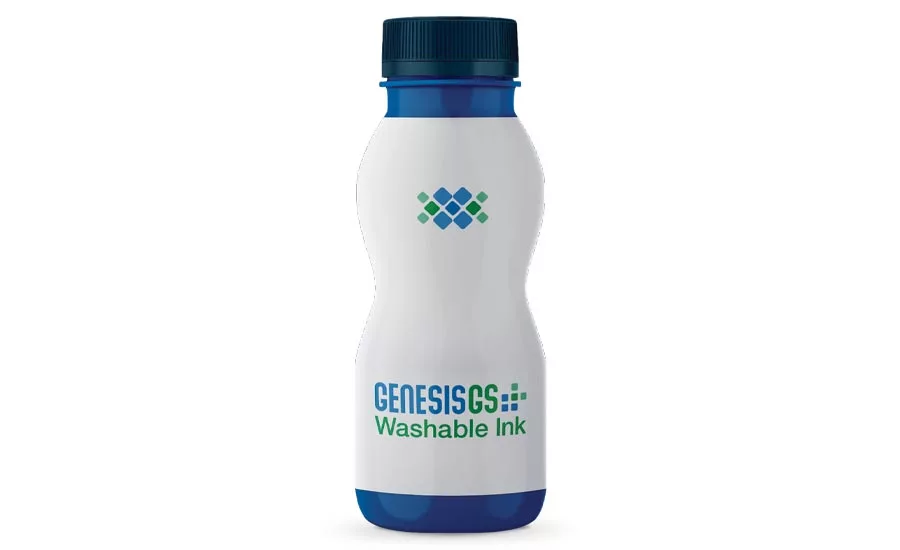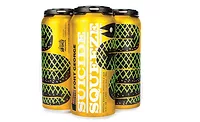Packaging Materials
Sustainability, experiential drive innovations in inks and coatings
Suppliers develop ink innovations to support recycling operations

In Jo Readman’s children’s book “George Saves the World by Lunchtime,” a young boy learns from his grandpa how the four Rs — reduce, reuse, repair and recycle — will help the child accomplish his plan to save the world by lunchtime. The packaging world also is doing its part to help “save the world” by making recycling easier for everyday world-savers.
“Many brands have made pledges to achieve significant sustainability goals and, depending on the beverage substrate, typically categorize their efforts into either recycling, bio-renewability or compostability,” says Rick Stokes, director of the coatings group for Sun Chemical, Parsippany, N.J. “Most efforts in the beverage category typically fall into the recycling category.”
Examples of this include mono-web printing and shrink sleeve films that can crystalize. “That’s because the ink comes off in the recycling wash and gets disposed of, while the film and bottle can be recycled together,” Stokes says.
Sustainable trends in other packaging methods also are having a trickle-down effect on the inks market.
“Many energy curing printers are switching from UV mercury bulbs to LED-curing bulbs for their energy curing needs,” Stokes says. “LED bulbs offer minimal heat transfer, save on energy costs, eliminate the need for exhaust (reduced ozone emissions) and are more efficient than UV mercury bulbs. With this technological advancement, Sun Chemical has developed a line of UV LED inks designed for a folding carton, paper and film used for in-mold labels that deliver all the key requirements a brand is looking for, from migration compliance to shelf standout, color accuracy and more.”
Shane Bertsch, vice president of strategic planning and innovation for INX International Ink Co., Schaumburg, Ill., also highlights a shift in the thought process between environmental efforts and the inks and coatings market.
“It relates to the circular economy and how the resources and products being used today must be recovered,” he says. “In turn, they complete the full circle by either being reused or recycled, thus creating similar resource streams since they can be used to produce other products. Our focus is to deliver solutions that enable businesses and brand owners to attain their goals. This can be achieved through our Cradle-to-Cradle certified inks, our Genesis GS inks that enable recycling of labeled PET bottles, and INX HRC high renewable content inks.”
However, regulations in various geographies also are something suppliers must factor into their sustainability plans. Barry McCann, product director for Colorado Springs, Colo.-based Chromatic Technologies Inc. (CTI), explains that the supplier is proactively reformulating its inks ahead of new regulations.
“[M]ost of our inks are already REACH and EuPia compliant, some of them even Swiss-compliant,” he says. “All CTI inks contain no BPA, BPF or BPS and are California Prop 65 compliant.”
McCann explains that CTI works with its converter partners when developing its newest innovations while anticipating the vanguard customer requests.
“For instance, the drive to reduce plastic has resulted in new interest in aluminum cups for sports and entertainment events,” he says. “CTI high-speed metal decorating thermochromic (temperature-activated) and photochromic (sunlight-activated) inks are already formulated for this application, and we’re ready for trials to support brands now. For traceability applications, CTI also has invisible-to-fluorescing inks in metal decorating, Flexo and offset formats so that printed traceability information doesn’t interfere with graphic designs and doesn’t make the customer read irrelevant copy.”
One-of-a-kind experience
Although sustainability has been a growing variable for inks manufacturers, the pigment-containing liquid still must fulfill its main role: to enhance a product’s branding and marketing.
“Many beverage makers seek out new ways to boost their brand through ink innovations,” says Megan Easterling Sanford, director of marketing operations for beverage packaging in North and Central America at Ball Corp., Westminster, Colo. “They are often looking to create a one-of-a-kind experience to stand out on shelf. Specialty inks can contribute to a unique look and feel while reinforcing brand differentiation.”
Among the ways that Ball Corp. will help further this goal is the 2020 launch of a new overvarnish (OV).
“We are calling it ‘Satin,’ it’s an OV that gives cans a soft luster,” she says. “The medium- to low-reflectance elevates the can and the brand. This unique innovation enhances the ‘premium’ look and feel of the can. It’s available in a growing number of sizes across our network.”
Sun Chemical’s Tony Renzi, vice president of product management for liquid inks for the North American inks division, explains that packaging has evolved beyond functional purpose to help facilitate communication, advertising, branding, security and, ultimately, drive sales.
“Inks and coatings can enhance a consumer’s involvement with the beverage package,” he says. “To help differentiate a product so that it stands out on the shelf, beverage packaging can be enhanced by adding a variety of special effects coatings. Items such as glitter, pearl or metallic coatings combined with contrasting matte and gloss effects provide visual contrast, stimulation and differentiation.”
In line with this, Sun Chemical offers its SunInspire Metallics range of coatings. “Using bright ‘mirror-like’ silver and gold coatings and effects can separate a package from the other competition on the shelves and create distinguishing optical effects,” Renzi says.
Alex Folloso, INX International’s Director of Metal Decorating R&D, also details the thirst from beverage-makers to incorporate the latest packaging innovation to help its brand stand out. Yet, he cautions that all solutions are not a one-size-fits-all opportunity.
“There are many unique effect technologies. However, some require a unique application to get the desired effect,” he says. “As ink makers, we sometimes have to educate manufacturers about the capabilities of the process and explain why some effects are not always possible.”
An experience in hand
As suppliers look to step up the capabilities of inks, temperature and sunlight activations show to be the next step in experiential beverage consumption.
“There has been an explosion of innovations around ink that reacts to different temperatures, complemented by a broad range of colors,” CTI’s McCann says. “Other new exciting areas are sunlight-activated ideas — any brand that seeks to own outdoor usage occasions will push hard in this area. CTI’s sunlight-activated inks have fast kinetics and unique color options. Reveal inks are a breakthrough for beverage packaging — a brand for the first time can now reveal a message or code during consumption. It’s hidden when product is delivered warm or cold.”
Like many aspects of the beverage market, digital advancements also are showcasing a growing influence on packaging.
CTI’s McCann explains that today’s brands want innovations that are powered by technology.
“Today, every brand is asking how they relate to mobile and social media,” he says. “In five years, every brand will have to answer, ‘What is the in-the-hand brand experience we want a consumer to have when they use our product?’
“In many cases those experiences will drive mobile; in other cases, it will just be enhancing the consumption/use experience,” he continues. “CTI has conducted consumer research in this area. Once brands understand how much this opportunity drives purchase intent, demand will explode. The biggest demand CTI has right now is signing up for our Innovation Incubator. CTI partners with select brands to offer the intersection of proprietary chemistry and ideas.”
Looking for a reprint of this article?
From high-res PDFs to custom plaques, order your copy today!





